The Reunification Park - In the footsteps of history
Aabenraa and Southern Jutland have been alternately Danish and German. In 2020 we celebrated the 100th anniversary of the region becoming Danish again, with the inauguration of this park
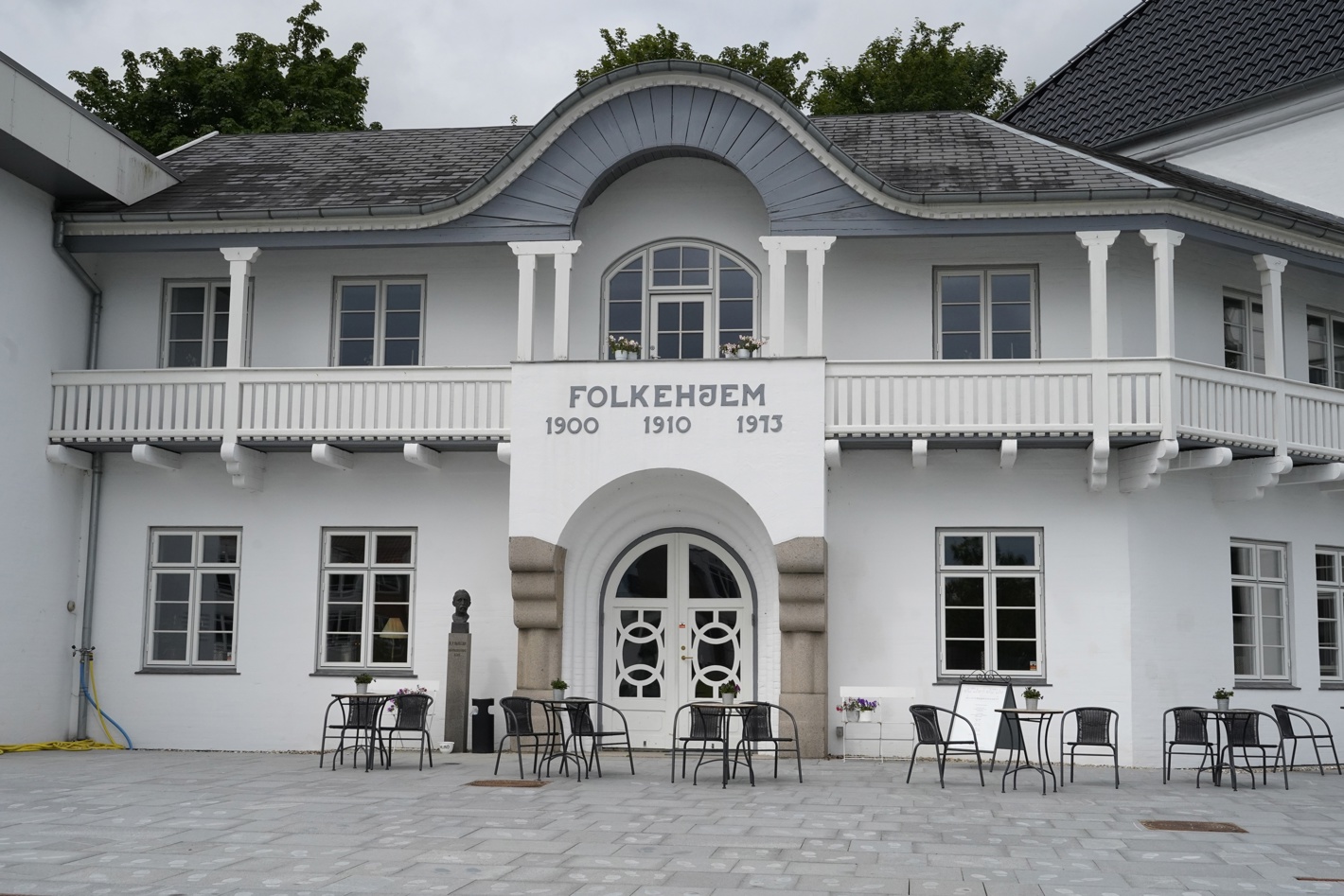
THE FOLKEHJEM’S BALCONY
The balcony has great symbolic significance, as it was from here that H.P. Hanssen announced and read out the Aabenraa Resolution on 17 November 1918, to the approx. 3,000 South Jutlanders in attendance.
THE SON
- 1937-1947
- Material: Granite
- Artist: Axel Poulsen (1887-1972)
The sculpture was commissioned by the Stauning Government in 1937 in memory of H.P. Hanssen and the South Jutland cause. The work depicts a tall young man whose mother holds her arm protectively around him. Hanssen is commemorated by a portrait medallion on the plinth. In the spring of 2020, the sculpture was moved from The Reunification Garden (Genforeningshaven) to its current location in The Reunification Park (Genforeningsparken) as a symbol of H.P. Hanssen's connection to Folkehjem.

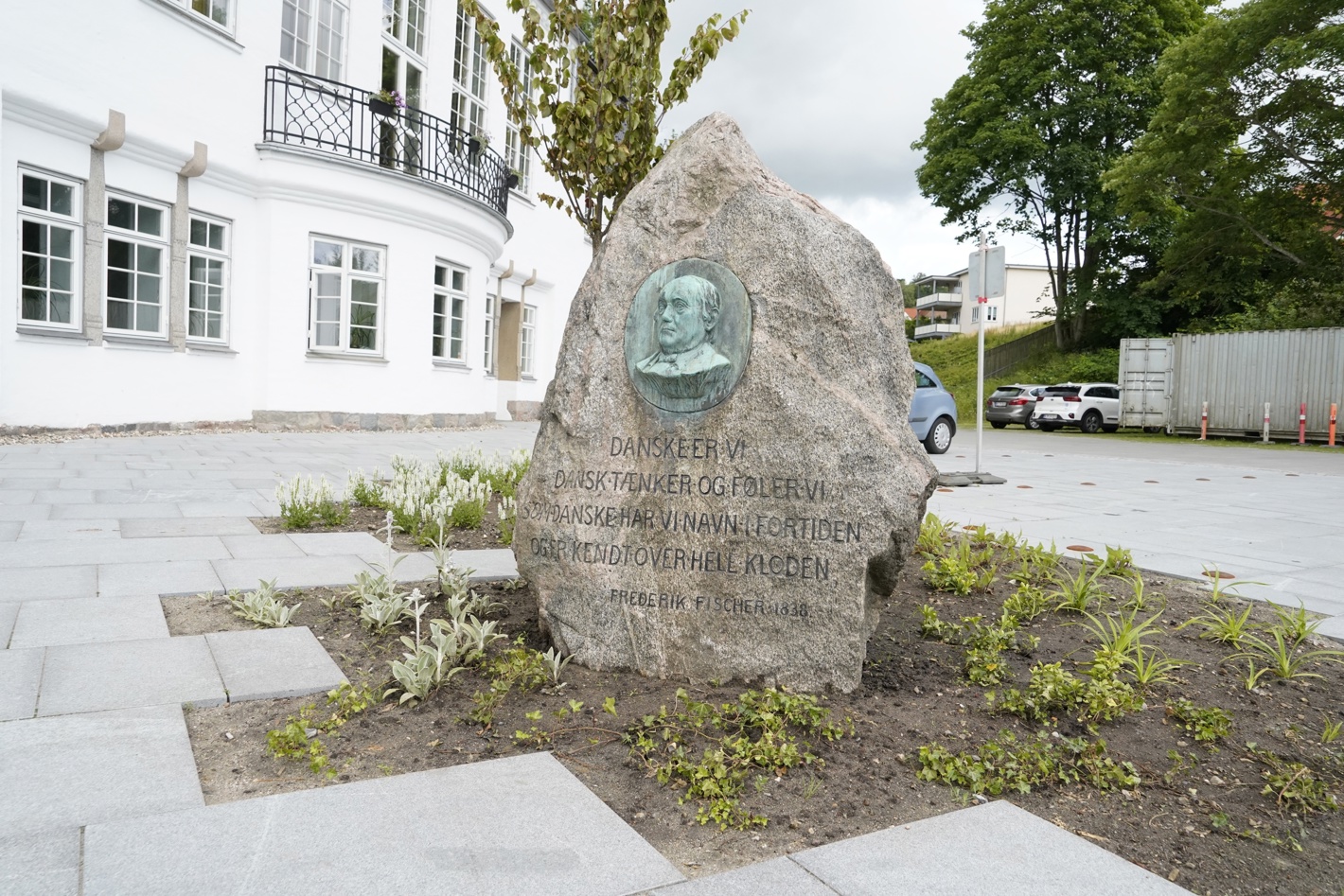
MEMORIAL STONE FOR FREDERIK FISCHER
The stone was erected by Frederiksklubben and Sprogforeningen in 1930 in memory of watchmaker and newspaper editor Frederik Fischer (1809-1871), who as co-founder of Frederiksklubben and editor of "Kongelig privilegerede Ugeblad for Aabenraa", later "Freja", fought early on for the Danish language and the Danish cause in Schleswig-Holstein.
FOOTPRINTS
Hundreds of footprints have been engraved into the tiles in the park in memory of the approximately 3,000 South Jutlanders who heard H. P. Hanssen's speech on 17 November 1918.
In collaboration with the Museum of Southern Jutland, and with contributions from citizens of the area, Aabenraa Municipality has collected more than 30 stories about people who stood on the square in 1918.
Ten of these people are commemorated in special footprints around the park, where their names are engraved into the tiles. Their stories have been turned into ten short podcasts, which can be found on Aabenraa Municipality's website. Use the QR code to go directly to the website, where the stories are located. You can also read and listen to them here:
The stories of the footprints
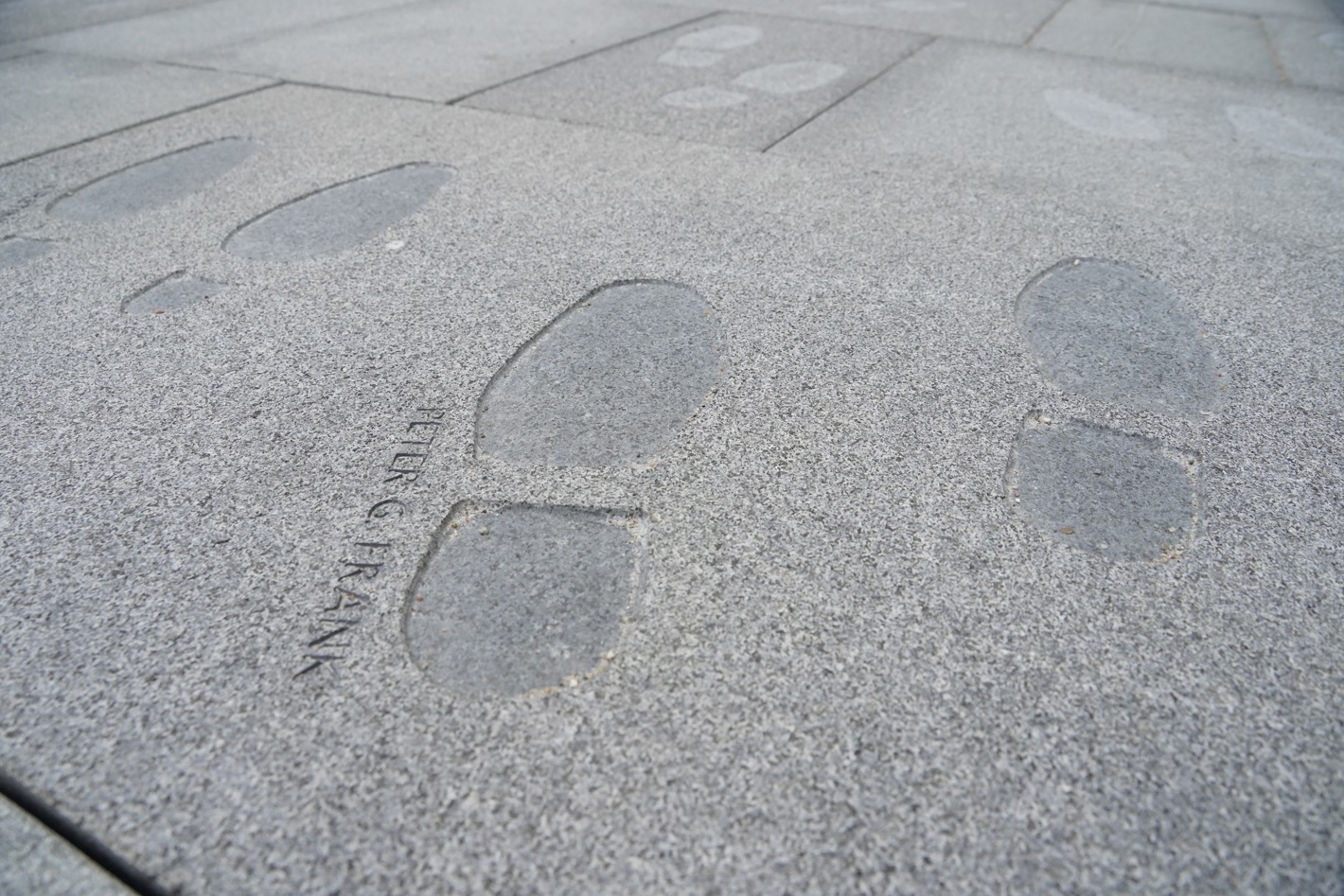
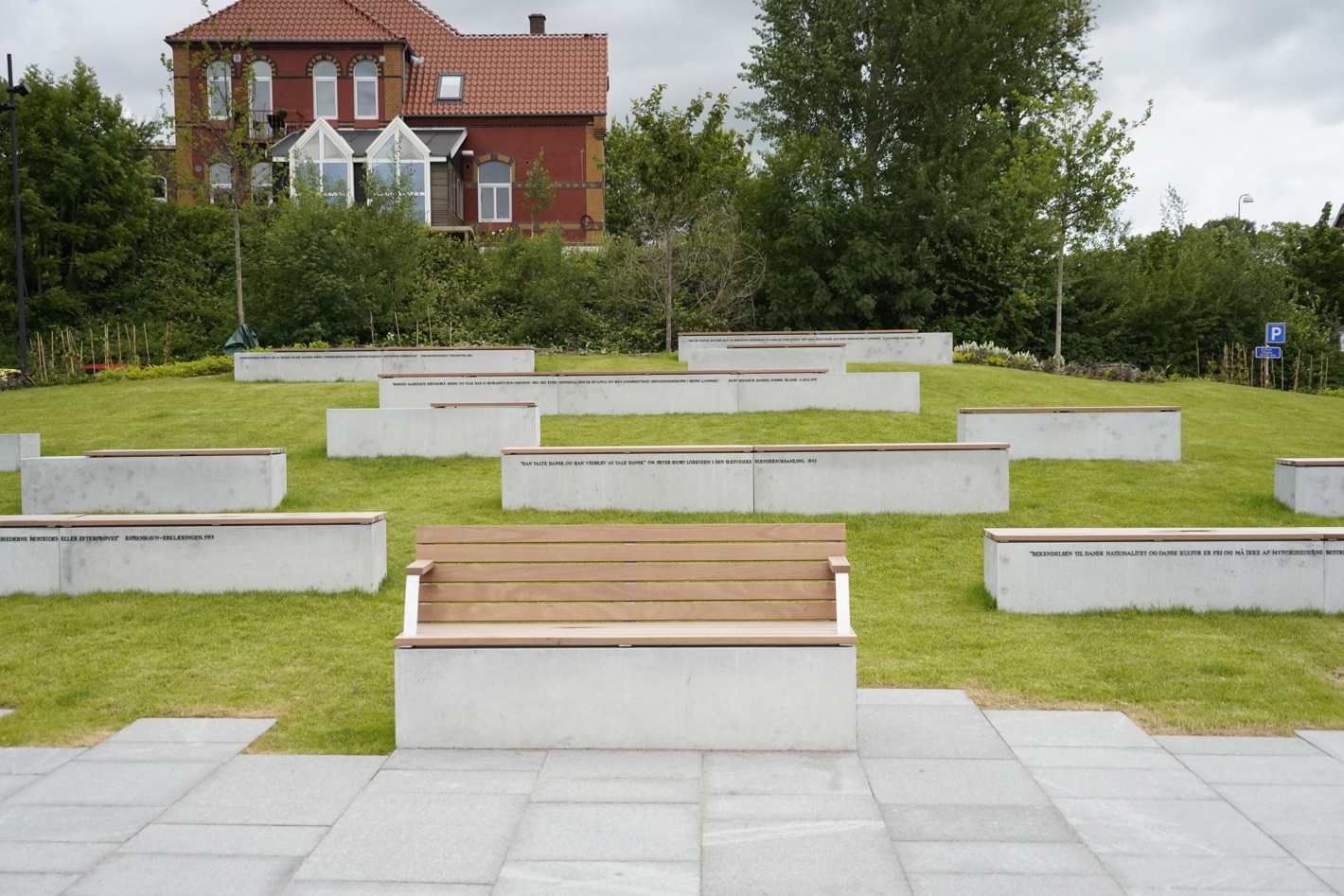
HISTORICAL HILLS
The hills and green areas of the Reunification Park are inspired by the original park in front of the Folkehjem. The many benches serve as an amphitheatre, where park visitors can sit and watch small theatre performances, concerts and readings.
THE QUOTES
The park's benches are decorated with historical quotes, excerpts from song lyrics, speeches and articles written or used by key people associated with the Reunification. There are excerpts from H.P. Hanssen's speech at Folkehjem and a quote from former Prime Minister Niels Neergaard.
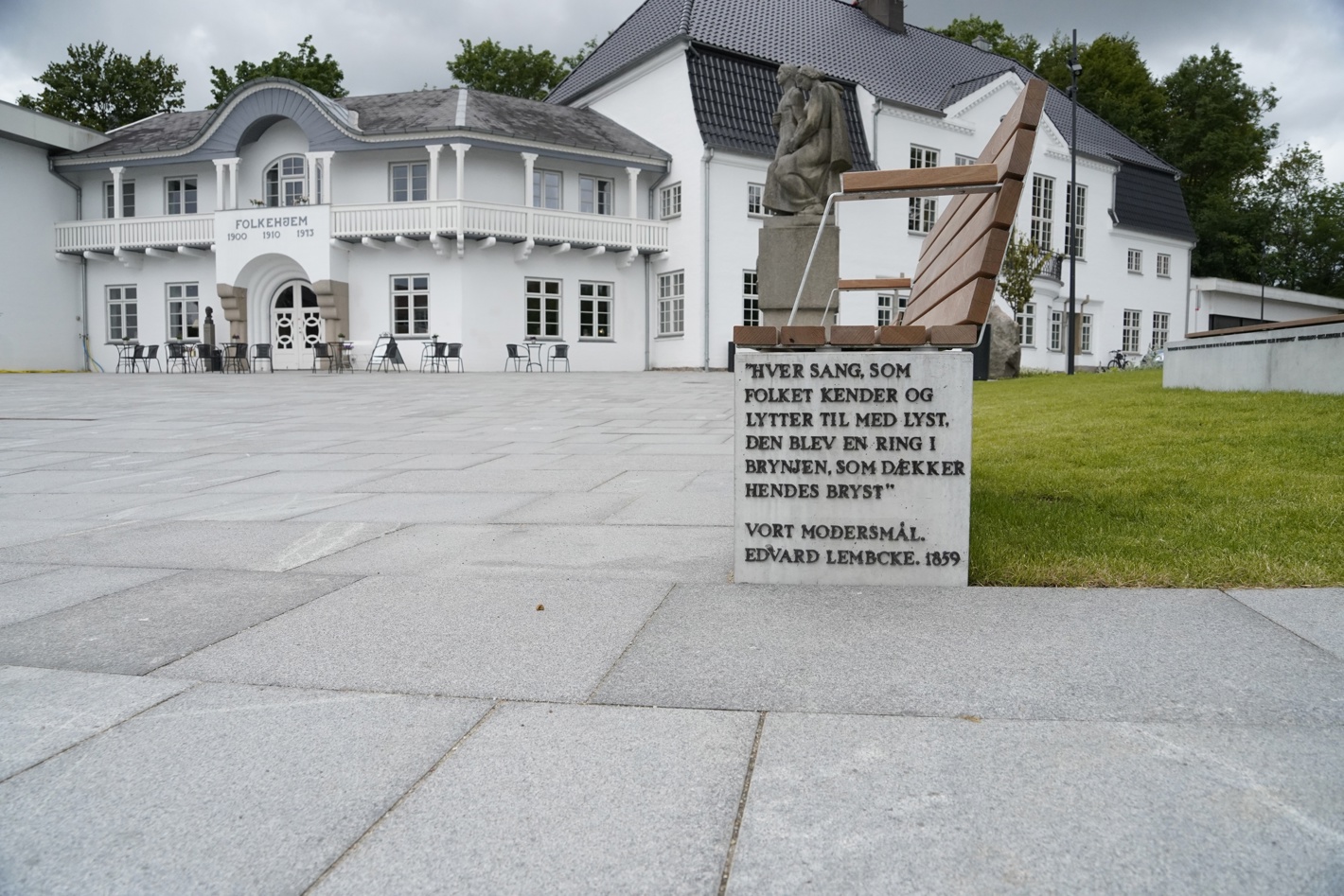

THE READING WOMAN
- 1973
- Material: Bronze
- Artist Ulf Rasmussen, 1913-1997
A reading woman was an obvious motif for the placement outside the Southern Jutland Regional Library, which was established in 1973 and is today Aabenraa Library.
TIMELINE
The timeline is made of corten steel and the individual points reflect the history of the Danish movement in Southern Jutland from the First Schleswig War to the 100th anniversary of the Reunification. For each section, a small map of Denmark shows where the border was drawn in the year in question, and emphasises the extent to which the border issue has gone from being a military struggle to a democratic one. The timeline is linked to a special guiding line in the pavement and therefore serves a practical purpose to support visitors with visual and mobility impairments.

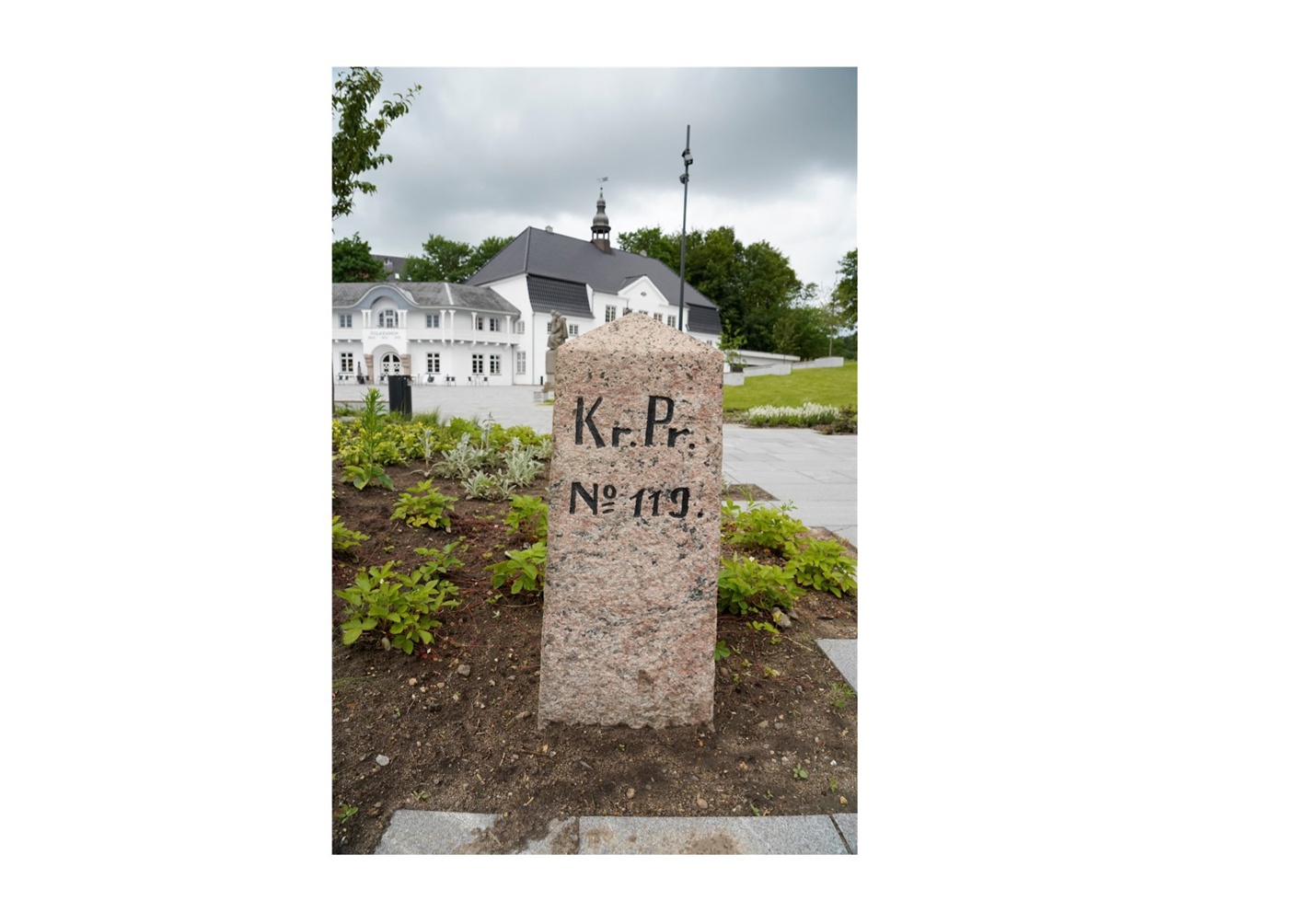
BOUNDARY STONE
The boundary stones originally stood at the old Kongeå border and were donated to Folkehjem after the Reunification. The stones stand as a kind of doorposts at the entrances to the Reunification Park. On one side is carved the inscription Kr. Pr. (Königreich Preussen) and on the other Kr. Dm. (Kingdom of Denmark).
WATER ART
- 1991-93
- Material: Granite
- Artist: Erik Warming b. 1942
Water art sculpture consisting of a smooth granite column with a top of stylised beach shells in different types of stone. The small vessel shows old symbols for the days of the week, and the larger vessel depicts the 12 signs of the zodiac. The work was originally placed on Storetorv, the location of the old town well.
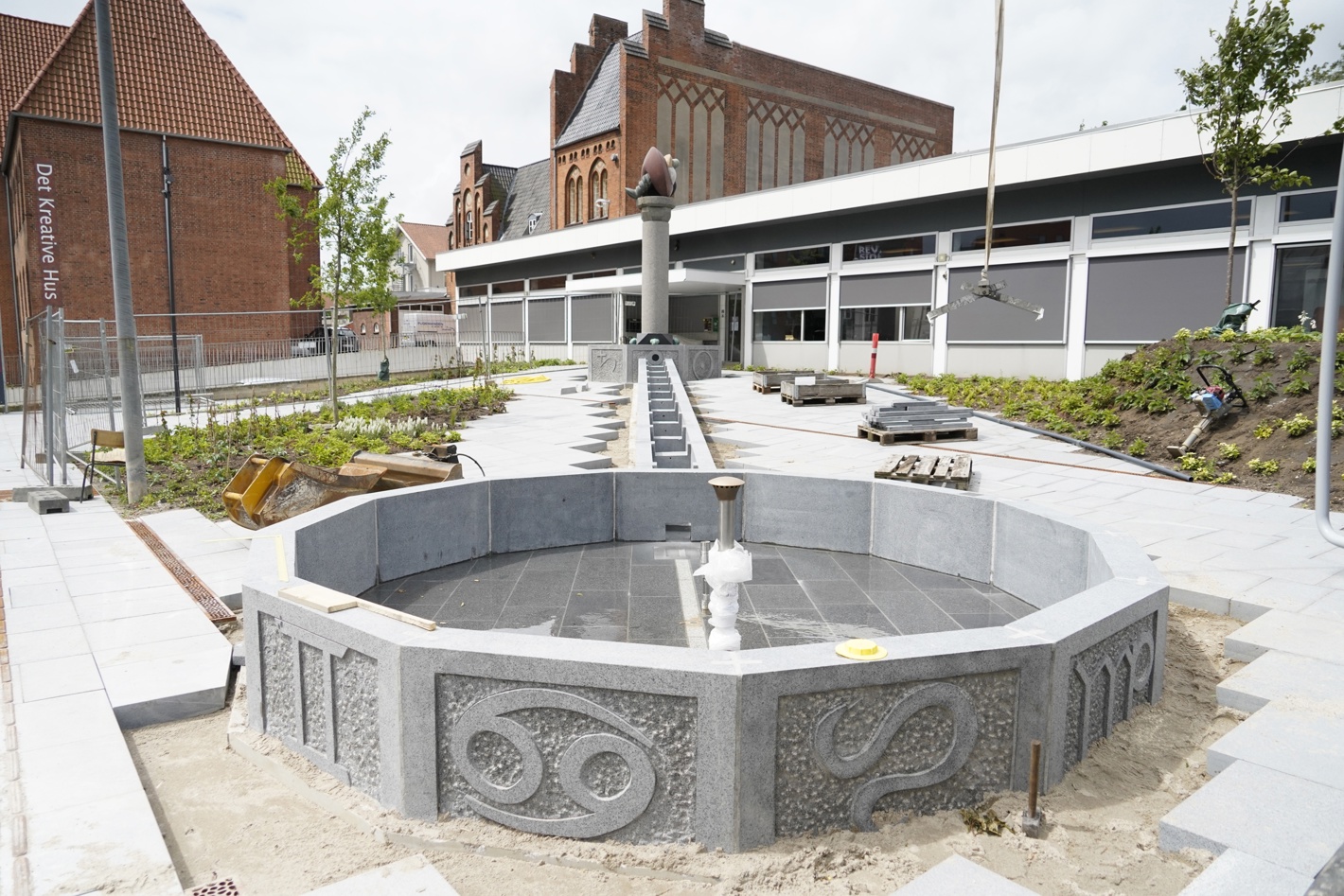

PLAYGROUND
The playground was developed in close dialogue with Aabenraa Libraries, and with its white zigzagged boundary line and buried speaking tube, it symbolises the boundary as it looks today.
FOUNTAIN
The park was created around the assembly square, which is the focal point. In the centre of the square, there are water fountains that invite life and play. In the evening, the fountains and the square are illuminated by LED lights, creating a cosy and intimate atmosphere.
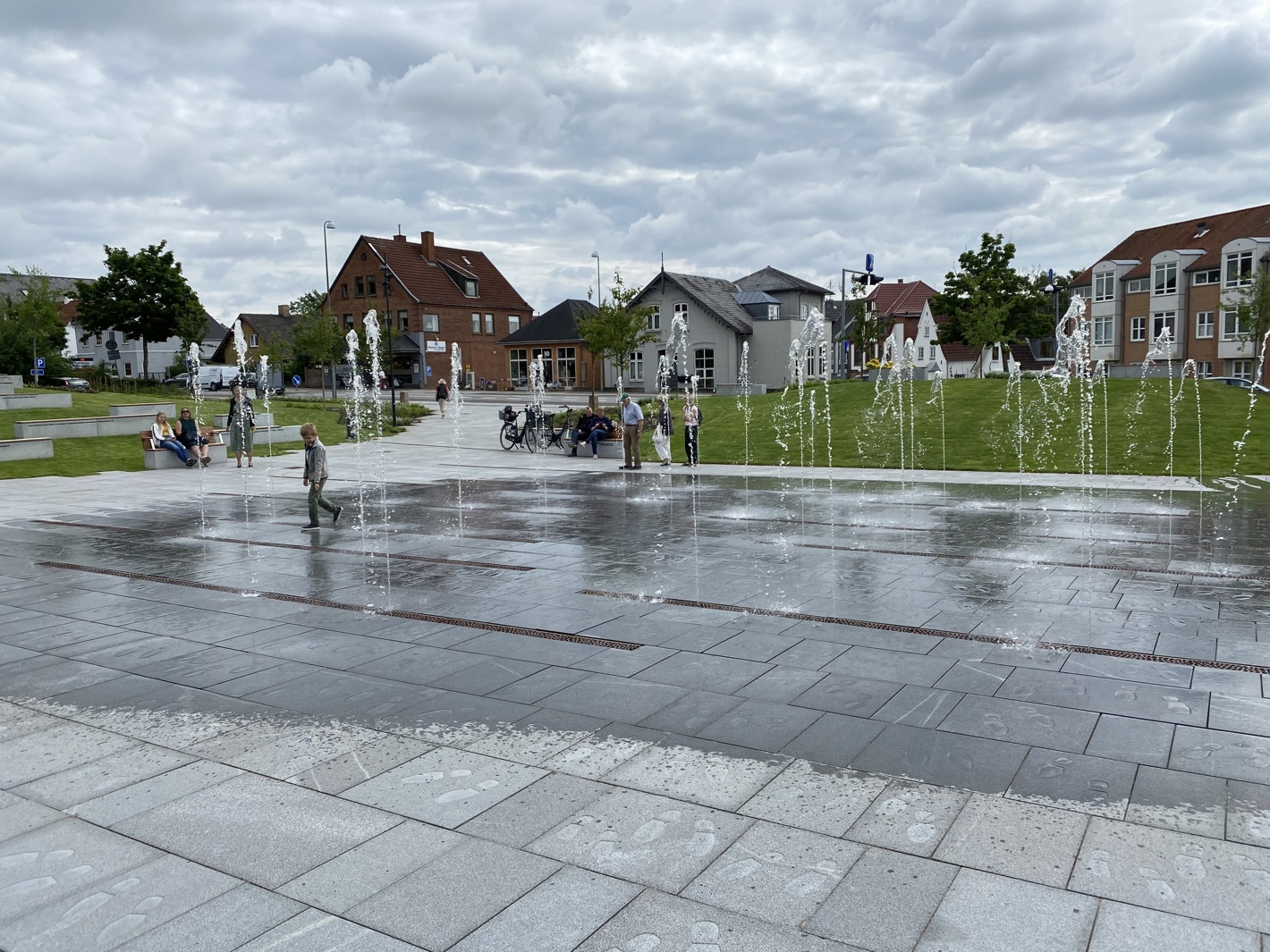
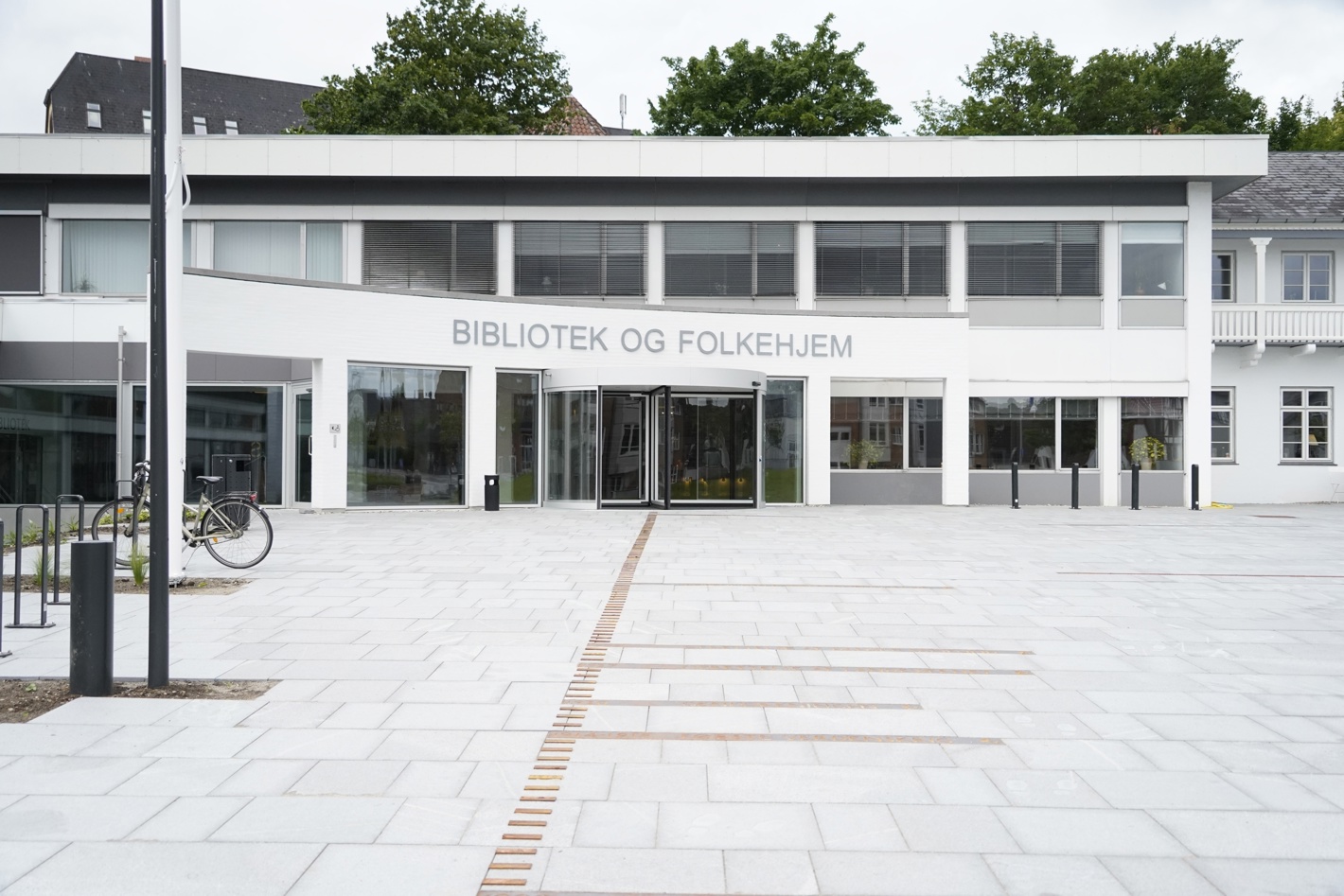
NEW ENTRANCE AREA
The new, common entrance area creates a connection between the park, Aabenraa Library and Folkehjem. The Sprogforening and library's affiliation are reflected in a special room divider decorated with letters, where those in brass form a word.
Reunification Park - In the footsteps of history
On 15 June 2020, then mayor Thomas Andresen and Prime Minister Mette Frederiksen inaugurated the Reunification Park at Folkehjem in Aabenraa.
Several years of work and planning have preceded the opening of the Reunification Park, whose green hills, shady nooks and cooling fountains are a new breathing space in the centre of Aabenraa. The park is characterised by clear references to the 100-year history of the Reunification, which, together with Folkehjem, makes the area an important place of remembrance for the 1920 Reunification.
Many details had to fit together, stakeholders had to be consulted, and the right design had to be found. For this purpose, Aabenraa Municipality set up an assessment committee with voting rights consisting of an external judge and five representatives from Aabenraa City Council, two members of Folkehjem's board, two managers from Aabenraa Municipality and the Danish Consul General in Flensburg. In addition, an assessment and sparring group consisting of specialised experts and resource persons, as well as representatives from Museum of Southern Jutland and the Visual Arts Council of Aabenraa were involved.
The design won because of its intuitive inclusion of the history of the Reunification, as well as the fact that Folkehjem's history and architecture are drawn into the urban space.
The park was scheduled to be opened on 30 May 2020, with a large public celebration, and officially inaugurated by Her Majesty Queen Margrethe II on 10 July 2020. As the Covid-19 pandemic unfolded in Denmark in April 2020, all of the municipality's Reunification events were cancelled and postponed until 2021. The park was therefore officially inaugurated during a closed ceremony for special guests on 15 June.
On this page, you can watch footage from what was, in the end, a very festive day.
You can also explore the Reunification Park and its landscaping, sculptures and symbolism. You can listen to the stories of ten ordinary people who fought for a Danish Southern Jutland, take a guided video tour of the park and learn more about the construction process.
The Reunification Park has been realised with funding from Aabenraa Municipality, as well as support from A.P. Møller og Hustru Chastine Møllers Fond til almene Formaal and Bitten & Mads Clausen's Fond.


